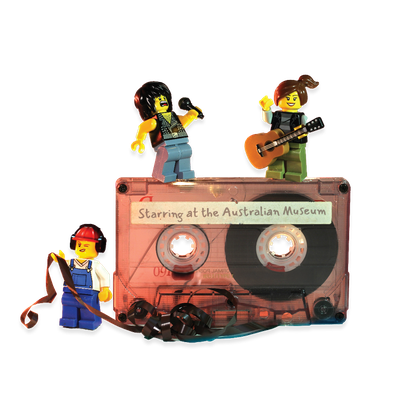Your search returned 2119 results
By Page Type
By Tag
- fish (966)
- blog (696)
- fishes of sydney harbour (401)
- First Nations (299)
- Blog (236)
- AMRI (169)
- archives (164)
- Eureka Prizes (146)
- Aboriginal and Torres Strait Islander (135)
- insect (126)
- Ichthyology (124)
- geoscience (109)
- minerals (102)
- climate change (100)
- podcast (94)
- Fish (91)
- Anthropology (89)
- International collections (80)
- Minerals Gallery (78)
- wildlife of sydney (78)
- Labridae (77)
- frog (74)
- gemstone (70)
- photography (66)
- history (64)
- Mollusca (60)
- gem (59)
- staff (59)
- Birds (56)
- Gems (56)
- Indonesia (56)
- education (56)
- shark (55)
- AMplify (54)
- people (53)
- earth sciences (50)
- exhibition (50)
- past exhibitions (50)
- Gobiidae (48)
- sustainability (46)
- Pomacentridae (45)
- Serranidae (44)
- lifelong learning (42)
- science (42)
- Earth and Environmental Science (41)
- Syngnathidae (41)
- Ancient Egypt (40)
- Bali (40)
- bird (40)
- dangerous australians (40)
-
Meria Ingram
https://australian.museum/get-involved/staff-profiles/meria-ingram/Meria Ingram is a Project Officer, Cultural Consultation, Cultural Collections Enhancement at the Australian Museum.
-
Madison Kuras
https://australian.museum/get-involved/staff-profiles/madison-kuras/Madison Kuras is Project Officer, Climate Solutions Centre at the Australian Museum.
-
Elijah Lemusuifeauali’i
https://australian.museum/get-involved/staff-profiles/elijah-lemusuifeaualii/Elijah Lemusuifeauali’i is a Wansolmoana Connect Officer at the Australian Museum.
-
Melissa Sutton
https://australian.museum/get-involved/staff-profiles/melissa-sutton/Melissa Sutton is a Senior Pasifika Collections Officer at the Australian Museum.
-
Ricky-Lee Erickson
https://australian.museum/get-involved/staff-profiles/ricky-lee-erickson/Ricky-Lee Erickson is Collection Manager, Ornithology at the Australian Museum.
-
Matthew Huan
https://australian.museum/get-involved/staff-profiles/matthew-huan/Matthew Huan is a Digitising Technical Officer in Entomology at the Australian Museum.
-
Melanie van Olffen
https://australian.museum/get-involved/staff-profiles/melanie-van-olffen/Melanie van Olffen is the Senior Collection Officer, First Nations Collections at the Australian Museum.
-
Audio guides for exhibitions
https://australian.museum/visit/audio-tours/Online audio guides of the Australian Museum exhibitions
-
Visit & Book
https://australian.museum/visit/Experience science, culture and nature in the heart of Sydney at the Australian Museum. Visit today with free general entry!
-
Primary and secondary school excursions
https://australian.museum/visit/book-a-group/school-bookings/Book self-led visits or educator-led programs for your school. Plus information to assist teachers in planning for their education group visit.
-
Discover more
2025 Australian Geographic Nature Photographer of the Year
Special exhibition
Free entry
Now open -
Discover more
Unfinished Business
Special exhibition
Free entry
Now open -
Discover more
Wansolmoana
Permanent exhibition
Free entry
Open daily -
Find out more
Burra
Permanent kids learning space
Free entry
10am - 4.30pm![]()
-
Discover more
Minerals
Permanent exhibition
Free entry
Open daily![]()




